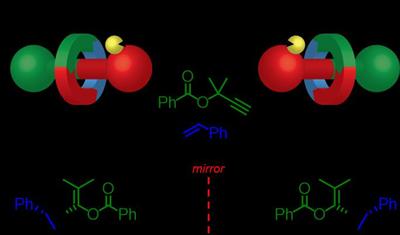Scientists develop new concept to form chiral catalysts

A new study by chemists at the University of Southampton has uncovered a way to create one hand of a chiral molecule by using a mechanical bond as a catalyst.
The research, led by Professor Steve Goldup, synthesised a chiral rotaxane that could bind to gold atoms, which were then used to catalyse a simple chemical reaction.
Chiral molecules are two molecules that are mirror images of each other but not identical – much like the left and right human hands. These ‘hands’ can react differently within the human body when used in pharmaceutical drugs.
The Southampton investigation, which has been published in the journal Chem, made use of mechanical bonds in rotaxanes, which consist of a ring shaped molecule wrapped around a dumbbell shaped axle.
As well as looking into further possibilities for catalysis and broader studies of molecules, the scientists are now investigating the how they can be used to potentially produce brighter, longer lasting, low computer power displays.
Read the full story on the main news page.
